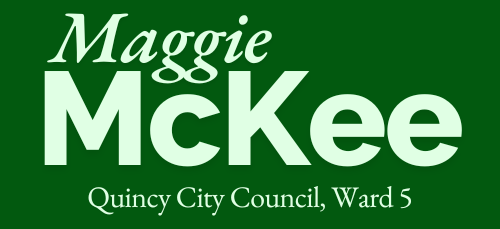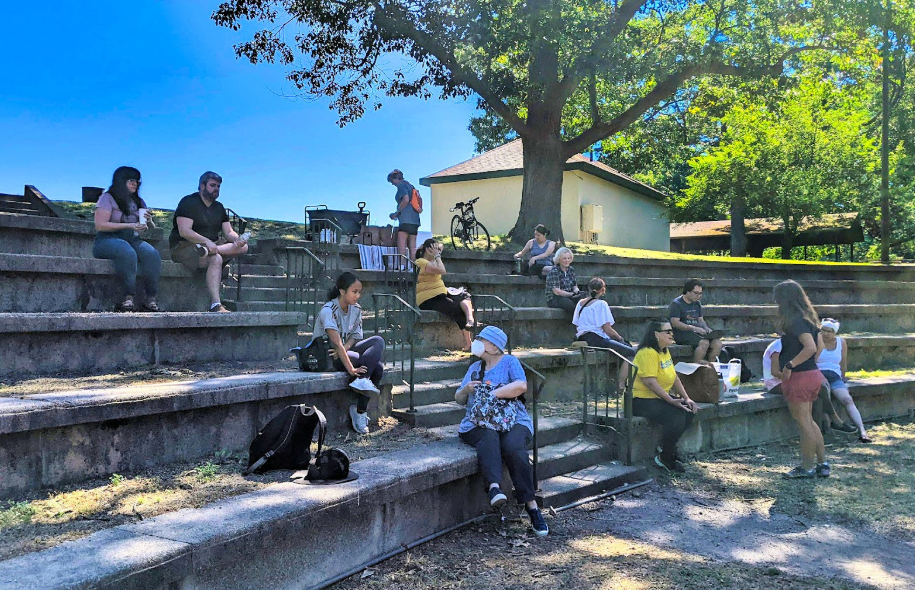City should treat residents as partners
This essay ran in The Quincy Sun in March 2023.
If a loved one regularly made decisions that affected you without consulting you at all, and you only found out about those decisions after the fact, perhaps through strangers on social media, how would you feel? Probably hurt, angry, and disrespected. Certainly wary and distrustful.
That’s how many Quincy residents felt recently when we learned on a recent Friday, first through social media or friends’ texts, about a city plan to fill in the Ruth Gordon Amphitheater near Pageant Field.
We found confirmation of the plan in a two-sentence entry in the minutes from a November Park Board meeting, and by visiting the parks department and asking an employee. But we didn’t know why the plan had been made, when the amphitheater’s destruction would start, or why none of the park users had been consulted or even informed of the plan.
We wrote to city officials to find out more (hearing back from some that they didn’t know about the plan either), shared memories of our times at the amphitheater and of Oscar-winning actor and Quincy native Ruth Gordon, to whom the amphitheater was dedicated in 1984, and created petitions to save the one-of-a-kind structure. A local musician volunteered to hold free concerts at the venue, and a local architect offered to plan the minor repairs needed to restore the structure to its original glory. It became clear that the amphitheater means a lot to many of us, and we feel personally invested in saving it.
On Monday afternoon, we started to get emailed responses from Natural Resources Commissioner David Murphy and Mayor Koch. I was grateful to receive answers to my questions from Commissioner Murphy, who said the amphitheater plan had been created because other work, including a new picnic pavilion, was already planned for Pageant Field. He said that the amphitheater had not seen regular use in more than 20 years – and in fact could not see major use without conflicting with softball games and family picnics. He said the rock wall presented a potential hazard and that the city prefers to hold outdoor concerts downtown, where there’s an economic benefit to local businesses. But he said that plans for the amphitheater to be filled in were being put on hold and that no further work would be done without a public process.
We breathed a sigh of relief. Our voices had been heard; the time and care we took to register our concerns had not been in vain.
But the sense of relief and goodwill did not last long. Within hours, someone posted an email response from the mayor that made it sound like the amphitheater could still be filled in: “I’ll add that there will also be no changes to the amphitheater under any circumstances until such time as an appropriate tribute to Ms. Gordon’s contributions has been fully planned” [emphasis added].
On AM Quincy with Joe Catalano, the mayor then said that the city was committed to honoring Ruth Gordon “in a more significant way” at a performing arts center planned for downtown and indicated that the park board would be responsible for holding public meetings about the amphitheater. He said concerts were now being held in Kilroy Square or the Hancock-Adams Common, and that the city is worried that kids could climb - and fall from - the amphitheater’s rock wall.
That sounded to many of us as if the city is still planning to do away with the amphitheater – just after holding some perfunctory public meetings.
If public meetings are held, I have some questions. Why would the park board have been allowed to green-light the proposal to fill in the amphitheater in the first place? According to the city’s website, the Park and Recreation Board “comprises nine resident volunteer members who meet monthly. They are responsible for promulgating rules and policy for parkland as well as reviewing and granting field permit requests.” I read that to mean that these volunteers, six of whom are appointed by the mayor, are allowed to set the hours that parks are open, for example, or to grant permission for clubs to host picnics on certain days. Not that they would be able to decide to do away with park features entirely. That power does not seem to be in their official purview.
Also, if the city is concerned that the amphitheater isn’t getting used, why not work with residents to think through ways to use it? What about holding nature talks there, followed by walks along Blacks Creek? What about holding concerts there when softball teams are not playing? I’m sure we could put our heads together and come up with a schedule of activities that the community could enjoy. And even without large performances, the amphitheater is a magical space. My son and I have put on impromptu “shows” on its stage, and during the pandemic, friends and I sometimes chat on its terraced seats when indoor gatherings seem too risky.
Finally, I would ask about the city’s safety concerns. Has anyone ever been injured there in the four decades since the amphitheater’s dedication? Is the city fielding a lot of calls about people climbing the rock wall? If it is, did the city consider any other solutions short of filling the whole thing in? (Also, wouldn’t many other city structures be dangerous if they were climbed on? The new fountain in front of City Hall, with its slippery surfaces, comes to mind.)
I’m sure other residents have other questions and concerns. And if the city would actually listen to them, and even better, proactively ask us what we think before making plans that affect us, we would feel much more trust in our government. We want to be active partners, not afterthoughts.
Maggie McKee
Wollaston
Petition: bit.ly/rgamphitheater

